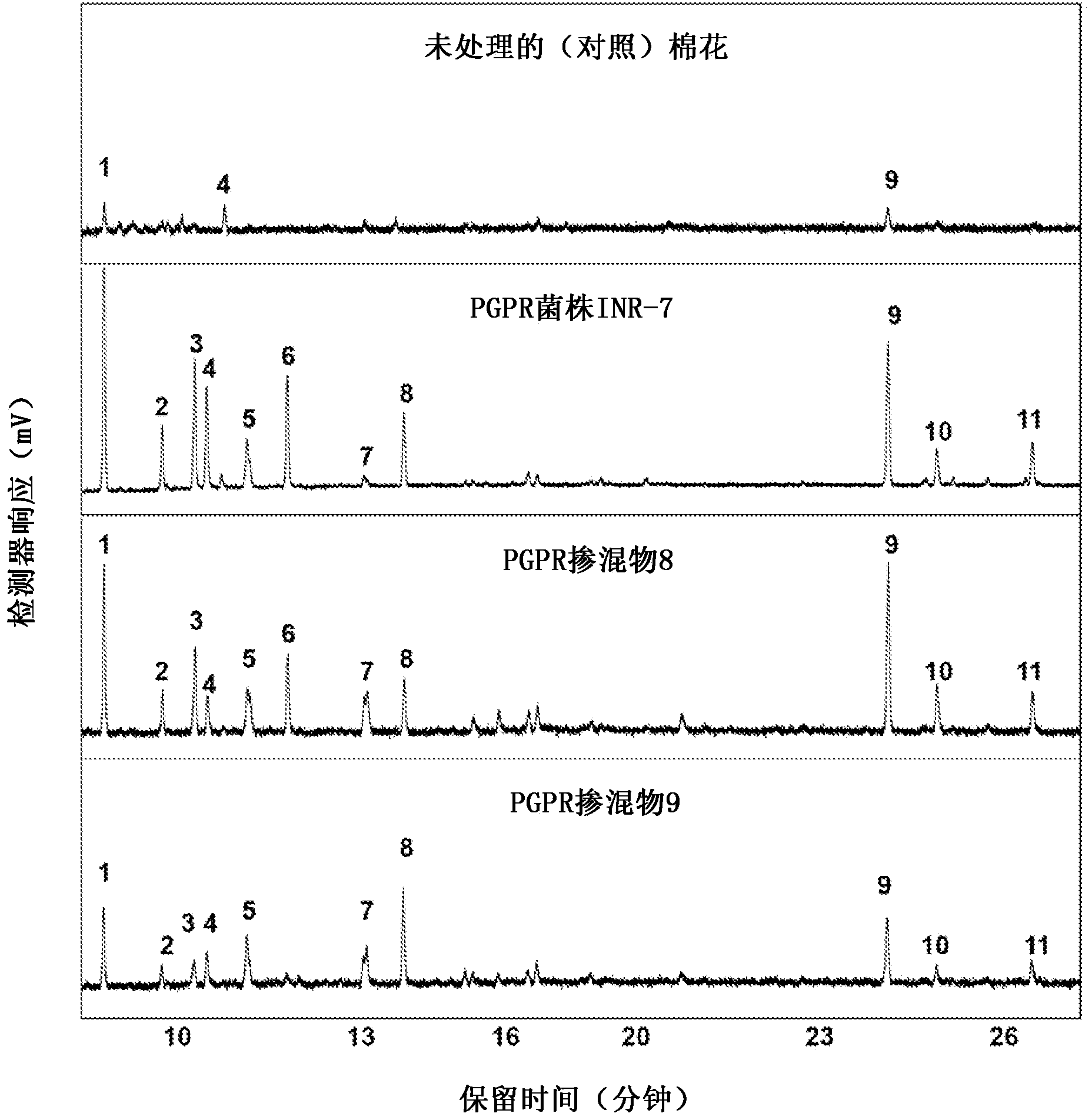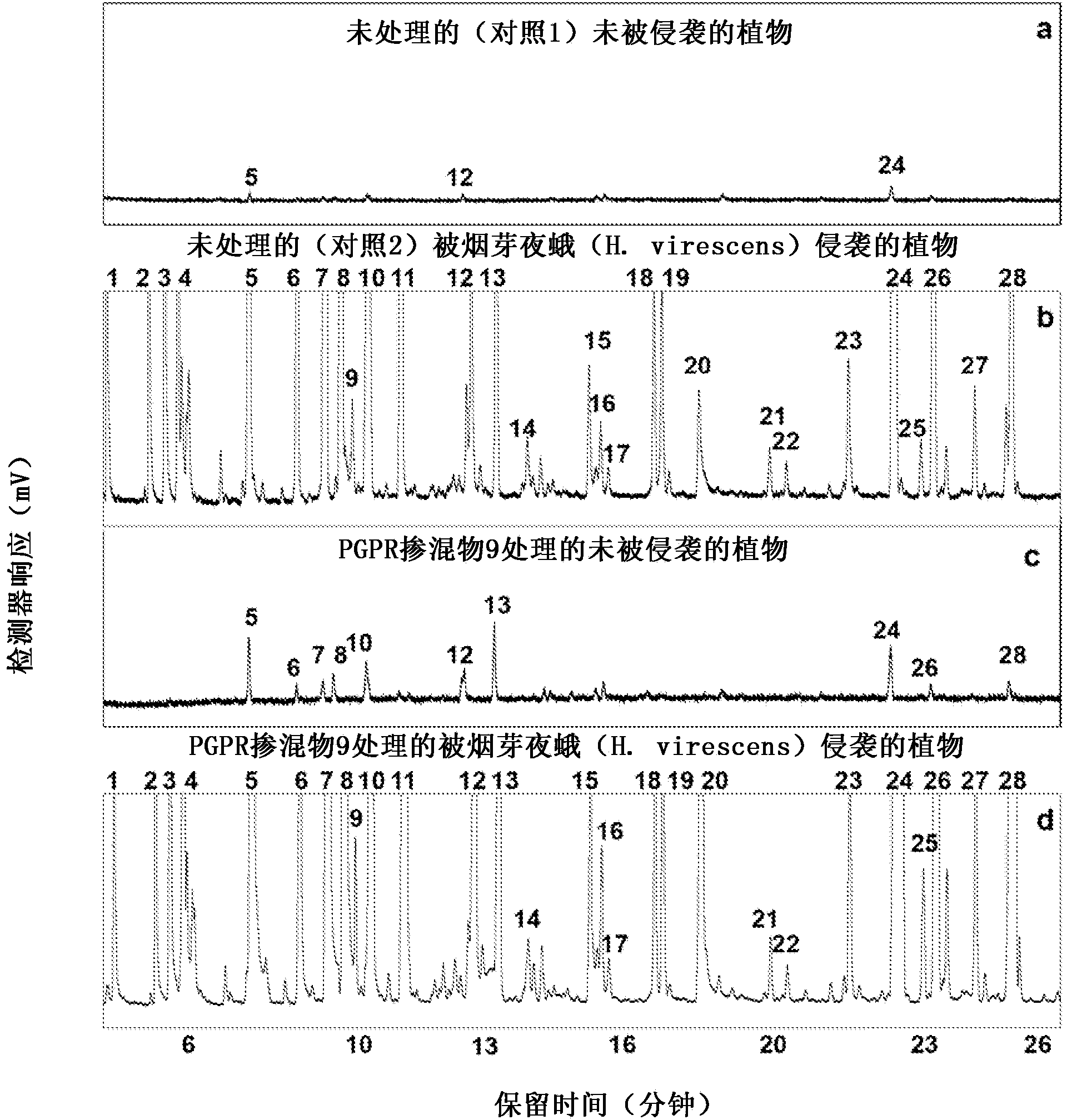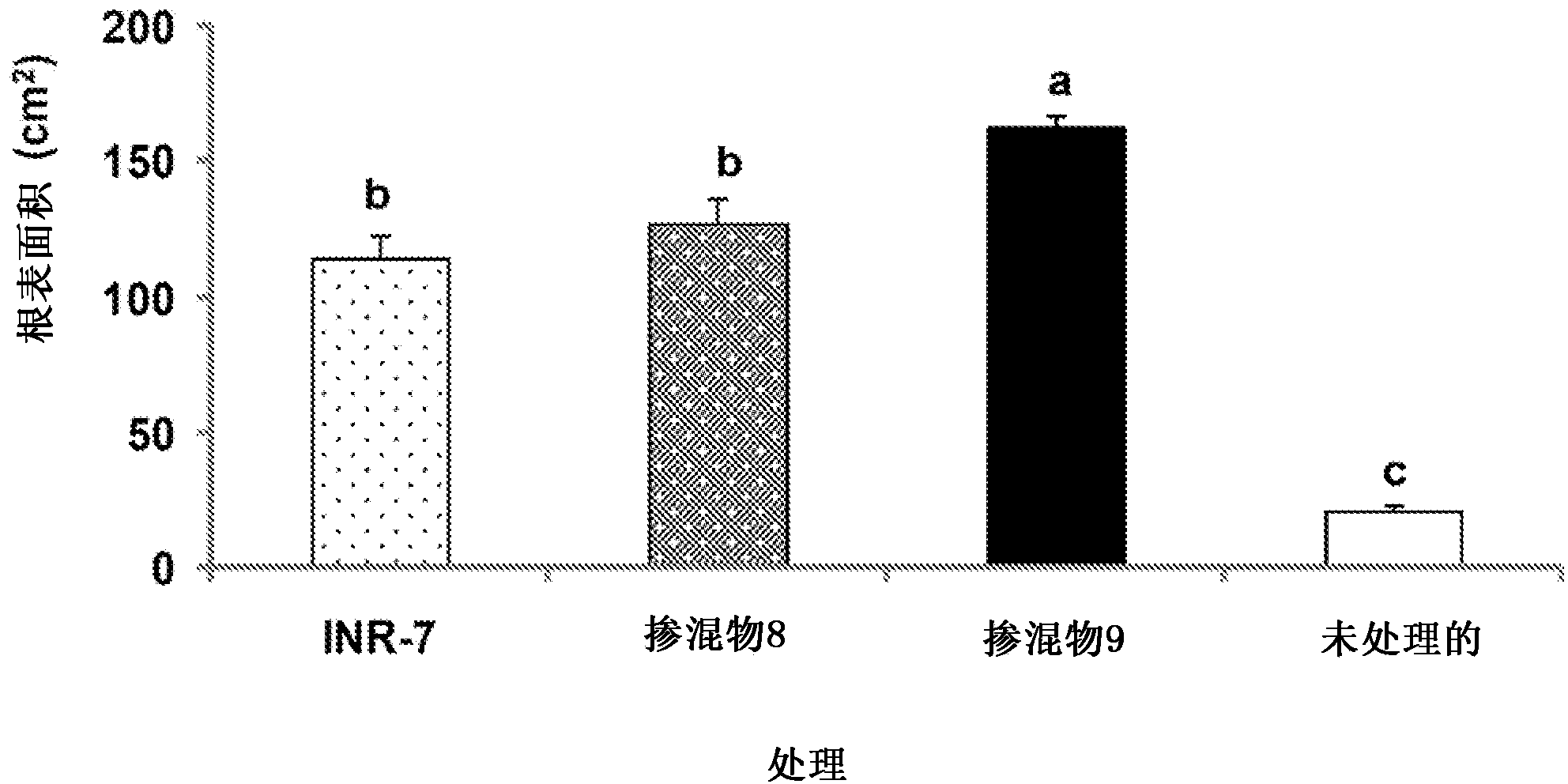Inoculants including bacillus bacteria for inducing production of volatile organic compounds in plants
A technology of Bacillus and Bacillus, applied in the field of PGPR, can solve problems such as lack of
- Summary
- Abstract
- Description
- Claims
- Application Information
AI Technical Summary
Problems solved by technology
Method used
Image
Examples
Embodiment 1
[0082] Example 1 - Effects of Plant Rhizosphere Growth Promoting Bacteria on Cotton Plant Volatile Induction and Parasitoid Attraction
[0083] Summary
[0084] Parasitoid wasps (parasitoids) are known to utilize various types of host-associated volatile signals as clues to host location. These volatile signals can be plant-based, derived from the herbivore host, or arise from the interaction between the herbivore and its plant host. The success of parasitoids in suppressing pest populations depends on their ability to locate their hosts in complex olfactory and visual environments. Despite the intense attention paid to host-parasitoid interactions, some aspects of olfactory communication in this class of insects are not well understood.
[0085] Here, a study was performed to assess the potential of plant growth-promoting rhizosphere bacteria (PGPR) to induce cotton volatiles and the resulting parasitoid responses. Three PGPR treatments were evaluated: i) Bacillus pumi...
Embodiment 2
[0131] Example 2 - Effect of PGPR on Oviposition Behavior of Beet Spodoptera
[0132] Summary
[0133] Treatment of crops with phytogrowth promoting rhizosphere bacteria (PGPR) has been shown to enhance plant growth and improve plant health in various ways. Previously, these bacteria were studied in models using only 1 or 2 strains of PGPR, limiting our understanding of the ways in which different strains might interact. Furthermore, little is known about the potential impact of PGPR on plant-insect interactions. To determine the effect of PGPR on the oviposition behavior of beet armyworm on PGPR-treated cotton plants, an oviposition selection study was performed. The total number of eggs and egg batches laid on PGPR-treated cotton plants and untreated cotton plants were recorded. Here, beet armyworm showed a preference for laying eggs on untreated cotton plants compared to PGPR-treated cotton plants. On one of the tested PGPR treatments containing B. amyloliquefaciens...
PUM
 Login to View More
Login to View More Abstract
Description
Claims
Application Information
 Login to View More
Login to View More - R&D
- Intellectual Property
- Life Sciences
- Materials
- Tech Scout
- Unparalleled Data Quality
- Higher Quality Content
- 60% Fewer Hallucinations
Browse by: Latest US Patents, China's latest patents, Technical Efficacy Thesaurus, Application Domain, Technology Topic, Popular Technical Reports.
© 2025 PatSnap. All rights reserved.Legal|Privacy policy|Modern Slavery Act Transparency Statement|Sitemap|About US| Contact US: help@patsnap.com



